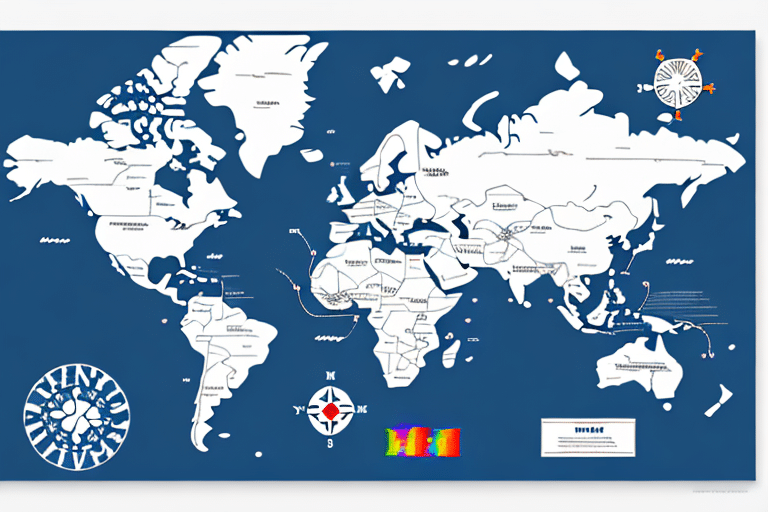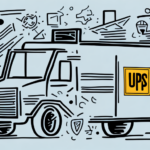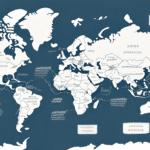Understanding FedEx Shipping Zones
Whether you're running an online business or simply need to ship packages regularly, understanding FedEx shipping zones is essential to ensure you're getting the best shipping rates possible. In this article, we'll explore what FedEx shipping zones are, how to determine your zone, and the factors that can affect your zone and the associated pricing. We'll also provide valuable tips for navigating these zones efficiently to save money on shipping costs and grow your business.
What Are FedEx Shipping Zones?
Simply put, shipping zones are geographic regions assigned by FedEx that determine the cost of shipping to and from those areas. These zones are categorized based on the distance from the shipment's origin to its destination, with each zone representing a certain distance range that's farther from the origin than the previous one. FedEx currently divides the United States into eight primary zones and numerous sub-zones that further divide those regions to determine shipping costs.
It's important to note that shipping zones aren't just limited to the United States. FedEx also assigns shipping zones to international destinations, which can affect the cost and delivery time of shipments. These international zones are determined by factors such as the destination country's infrastructure, customs regulations, and political stability.
Additionally, FedEx offers a variety of services and tools to help businesses and individuals navigate shipping zones and determine the most cost-effective shipping options. These include online calculators that can estimate shipping costs based on origin, destination, and package weight and size, as well as specialized services like FedEx SameDay and FedEx Custom Critical that offer expedited shipping options for urgent or high-value shipments.
How to Determine Your FedEx Shipping Zone
FedEx provides a Zone Locator tool that allows you to determine your shipping zone based on your zip code or postal code. Additionally, if you regularly ship packages to a specific location, it may be helpful to use FedEx's shipping zone charts, which illustrate the different zones across the country. Knowing your zone is essential to understanding the associated shipping costs and planning your shipment strategy.
FedEx's shipping zones are based on the distance between the origin and destination of the package. This means that packages traveling shorter distances will have lower shipping costs than those traveling longer distances, even if they are in the same zone. Understanding this can help you make informed decisions about how to package and ship your items.
In addition to the Zone Locator tool and shipping zone charts, FedEx also offers a variety of shipping services and options to help you customize your shipment to meet your specific needs. From same-day delivery to international shipping, FedEx has a range of solutions to help you get your package where it needs to go, on time and within budget.
Factors That Affect Your Shipping Zone
While FedEx primarily bases its shipping zones on geographic location, other factors can also influence which zone your package falls into. These factors include the package's weight, dimensions, and the type of service used. For example, FedEx's NextDay delivery service may have different shipping zones than its standard delivery service, with rates increasing the farther the package needs to travel and the larger or heavier it is. It's essential to consider these factors when shipping packages to determine the most cost-effective approach for your business.
Another factor that can affect your shipping zone is the time of year. During peak holiday seasons, shipping rates may increase, and delivery times may be longer due to high demand. According to industry reports, shipping rates have seen fluctuations due to rising fuel costs and increased consumer demand, impacting overall shipping expenses. It's important to plan ahead and factor in these potential delays when scheduling shipments.
Additionally, the destination of your package can also impact your shipping zone. If you're shipping to a remote or rural area, you may be subject to higher rates or longer delivery times. It's important to check with FedEx to see if there are any additional fees or restrictions for shipping to certain locations.
Why Understanding Your Shipping Zone Is Important for Your Business
Knowing your shipping zone is critical to understanding your shipping costs, as different zones have different pricing structures with increased prices for packages sent to farther locations. By shipping within your zone or to nearby zones, you can save on shipping costs and reinvest those savings into your business. Understanding your shipping zone can also help you better plan your supply chain and shipping strategy, ensuring timely delivery and customer satisfaction.
Moreover, understanding your shipping zone can help you identify potential markets for your business. By analyzing the shipping zones of your current customers, you can identify areas where there is a high demand for your products or services. This information can help you target your marketing efforts and expand your customer base, ultimately leading to increased sales and revenue.
How to Save Money on Shipping with FedEx Zones
One of the most significant benefits of understanding your FedEx shipping zones is the ability to save money on shipping costs. Some strategies for cost savings include:
- Shipping within your zone or to nearby zones whenever possible
- Bundling packages to reduce the overall cost of shipping
- Utilizing FedEx's flat rate box options
- Negotiating rates for high-volume shipments
Additionally, taking advantage of FedEx's discounted rates through partnerships or promotions can help further reduce your shipping costs.
Another way to save money on shipping with FedEx zones is to use their SmartPost service. This service is designed for low-weight, non-urgent packages and is often less expensive than standard shipping options. SmartPost works by utilizing FedEx's network to transport packages to a local post office, where they are then delivered to the final destination by the USPS.
It's also important to note that understanding your FedEx shipping zones can help you avoid unexpected fees. For example, if you ship a package to a residential address in a commercial zone, you may be charged a residential delivery fee. By knowing your zones and selecting the correct shipping option, you can avoid these additional charges and save money in the long run.
Tips for Efficiently Navigating FedEx Shipping Zones
To efficiently navigate FedEx shipping zones, it's important to have a plan and schedule in place. Consider the following tips:
- Set specific shipping days and batch process orders to minimize the number of shipments and reduce overall shipping costs.
- Use tools such as address validation software and shipment tracking to ensure timely and accurate deliveries, reducing the risk of packages being sent to the wrong zone and incurring additional costs.
- Regularly review and optimize your shipping strategy to stay ahead of the game and achieve more significant cost savings over time.
Another important factor to consider when navigating FedEx shipping zones is the weight and dimensions of your packages. By accurately measuring and weighing your packages, you can avoid unexpected fees and surcharges. It's also essential to properly package your items to prevent damage during transit, which can result in additional costs and delays.
Furthermore, taking advantage of FedEx's various shipping options can help you save money and time. For example, using FedEx Ground instead of FedEx Express can be a more cost-effective option for non-urgent shipments. Additionally, FedEx offers discounts for volume shipping, so if you regularly ship a large number of packages, it may be worth exploring these options to further reduce your shipping costs.
Common Mistakes to Avoid When Using FedEx Zones
While understanding FedEx zones can help you save money and optimize your shipping strategy, there are common mistakes to avoid to ensure you're not incurring additional costs unintentionally. These mistakes include:
- Not properly packaging items
- Not weighing packages accurately
- Using incorrect shipping labels
- Not verifying recipient addresses
- Sending shipments to the wrong zone
By taking the time to double-check the details of your shipment and regularly auditing your shipping process, you can avoid these common mistakes and minimize unexpected costs.
Another common mistake to avoid when using FedEx zones is not considering the delivery time. It's important to understand the transit time for your shipment and choose the appropriate shipping service to ensure your package arrives on time. Choosing a faster shipping service may be more expensive, but it can save you money in the long run by avoiding late delivery fees or lost business due to delayed shipments.
Additionally, it's important to properly declare the value of your shipment. Under-declaring the value of your package can result in insufficient insurance coverage, leaving you responsible for any damages or losses. On the other hand, over-declaring the value can result in higher shipping costs and potential customs issues. Take the time to accurately declare the value of your shipment to avoid any unnecessary costs or complications.
Best Practices for Using FedEx Zones to Grow Your Business
To take advantage of FedEx zones and grow your business, consider how you can use shipping as a competitive advantage:
- Offer fast and reliable shipping within your chosen zones to create a unique selling proposition that sets you apart from competitors.
- Regularly research and utilize new shipping technologies, such as automation and international shipping options, to open up new markets and revenue opportunities for your business.
How to Optimize Your Shipping Strategy Using FedEx Zones
Optimizing your shipping strategy using FedEx zones requires a comprehensive approach that evaluates all aspects of your shipping process. This approach can include:
- Regularly auditing and analyzing your shipping data to identify areas for improvement.
- Utilizing software tools to streamline your process and reduce errors.
- Negotiating favorable shipping rates with FedEx or other carriers.
By taking a dedicated and data-driven approach to your shipping strategy, you can achieve significant cost savings and optimize the customer experience for your business.
Advanced Strategies for Expanding Your Reach with FedEx Shipping Zones
For businesses looking to expand their reach and sell to different regions across the country, understanding how to use FedEx shipping zones to your advantage is critical. This can include:
- Researching and targeting new shipping zones.
- Utilizing FedEx's comprehensive suite of international shipping services.
- Investing in data analytics and predictive modeling to optimize your shipping strategy.
With a properly executed and data-driven shipping strategy, businesses can expand their reach and take advantage of new revenue opportunities.
Expert Advice on Maximizing the Benefits of FedEx Shipping Zones
Finally, if you're looking for additional advice on how to maximize the benefits of FedEx shipping zones, it can be helpful to consult with experts in the field. This can include:
- Partnering with seasoned logistics professionals.
- Attending industry events and conferences.
- Staying up to date on the latest shipping trends and best practices.
By leveraging expertise and knowledge, businesses can optimize their shipping strategy and stay ahead of the competition.
Overall, understanding FedEx shipping zones is essential for any business looking to save money and optimize their shipping strategy. By taking the time to understand your zone, factors that affect pricing, and best practices for shipping, you can create a competitive advantage for your business and achieve sustainable growth over time.




















